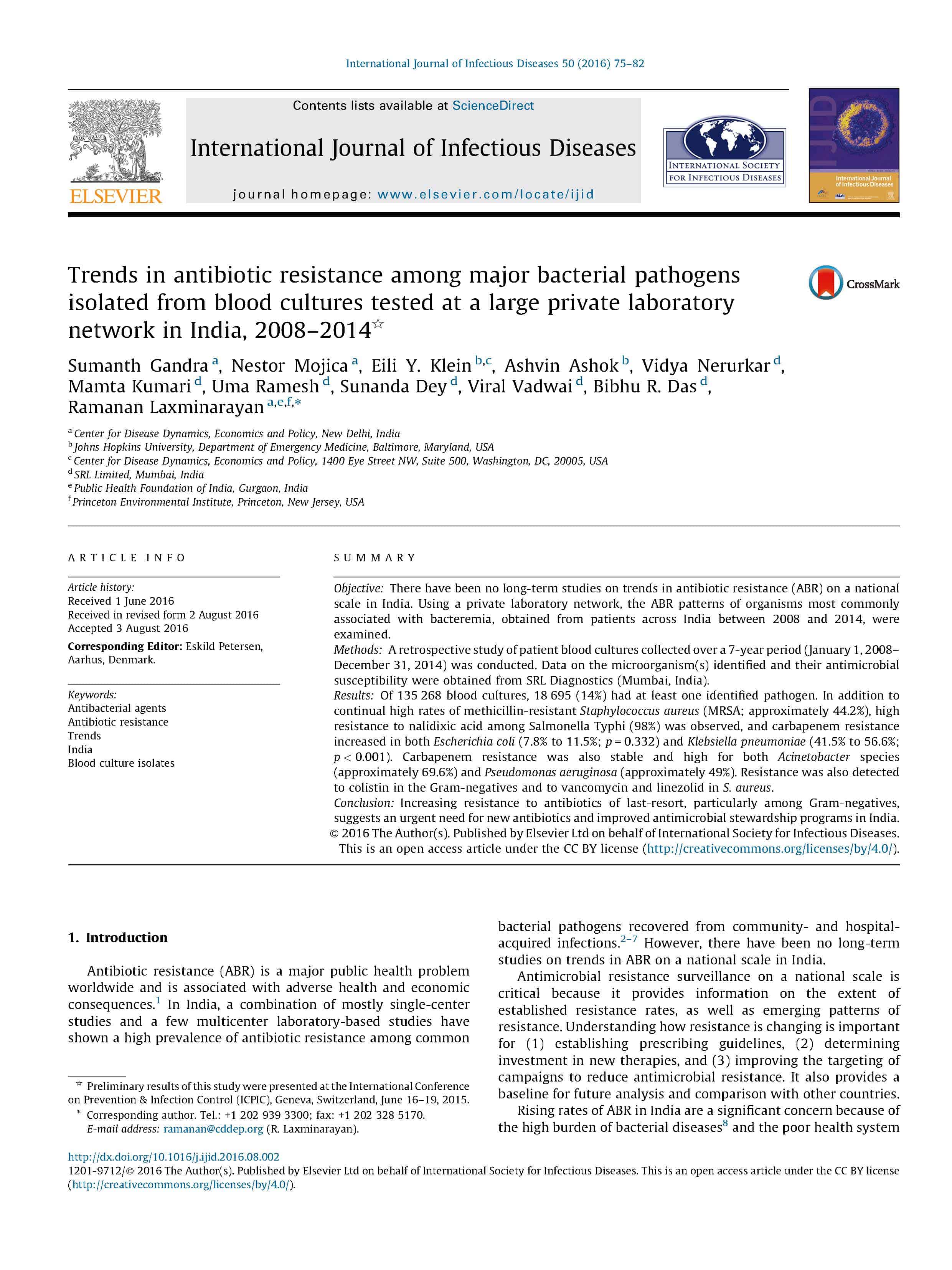September 08, 2016

The Question: In the first long-term, national-scale study on trends in antibiotic resistance in India, based on more than 18,000 isolates collected by a large private diagnostic laboratory network from 2008 through 2014, CDDEP and SRL researchers found high and increasing antibiotic resistance rates among both Gram-negative and Gram-positive organisms. The findings underscore the urgent need for effective antibiotic stewardship programs and the development of new antibiotics, particularly for Gram-negative infections.
What We Found:
- Resistance rates were high to both frontline and last-resort antibiotics for all Gram-negative isolates.
- More than 95 percent of Salmonella Typhi and S. Paratyphi A, were resistant to nalidixic acid, while resistance to older antibiotics, such as ampicillin and trimethoprim-sulfamethoxazole (co- trimoxazole), decreased over time.
- Fluoroquinolones have steadily replaced older antibiotics as a treatment for enteric fever, though they can no longer be used as the sole treatment option for suspected enteric fever. Instead, physicians may be able to again prescribe older drugs or third-generation cephalosporins.
- Resistance to carbapenems, a last-resort class of antibiotics for Gram-negative infections, is higher in India than in any other country, based on published reports in the literature.
- Resistance to colistin, the most commonly used of the other major last-resort antibiotic class, polymyxins, has also emerged in India, exposing a current and future vulnerability.
Why It Matters: The authors observed that enteric fever is the major cause of bacteremia affecting children and young adults, indicating the need for improved sanitation and an urgent need for a vaccine conferring long-term immunity. The need is obvious for stepping up infection control in healthcare facilities to global standards to prevent the spread of infections, particularly those that are drug-resistant.
According to lead author CDDEP researcher Sumanth Gandra, improvements are needed in the Indian healthcare system, where “antibiotics have for too long substituted for general hospital infection control and lagging vaccination rates. The future price of continuing to ignore the growing antibiotic resistance problem is more deaths from resistant infections and higher hospital costs for longer inpatient stays and the need for newer, more expensive antibiotics. Investing in antibiotic stewardship now will decrease these costs in the future. This analysis should convince even the biggest skeptics that it’s time to act—if not too late already.”

